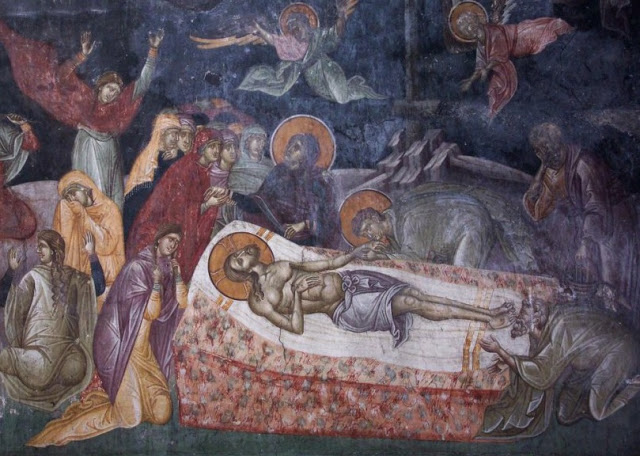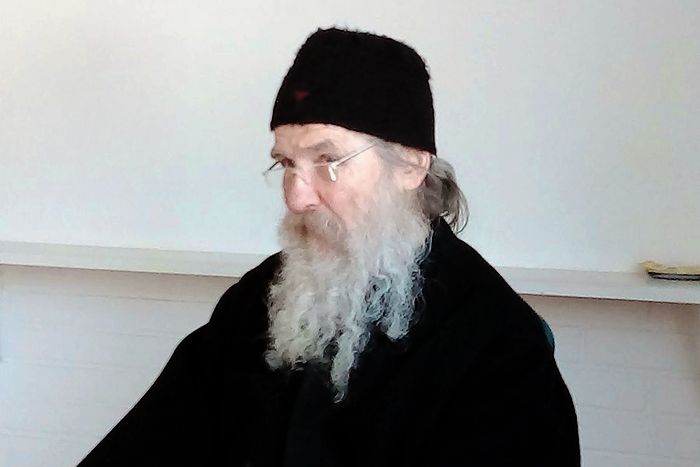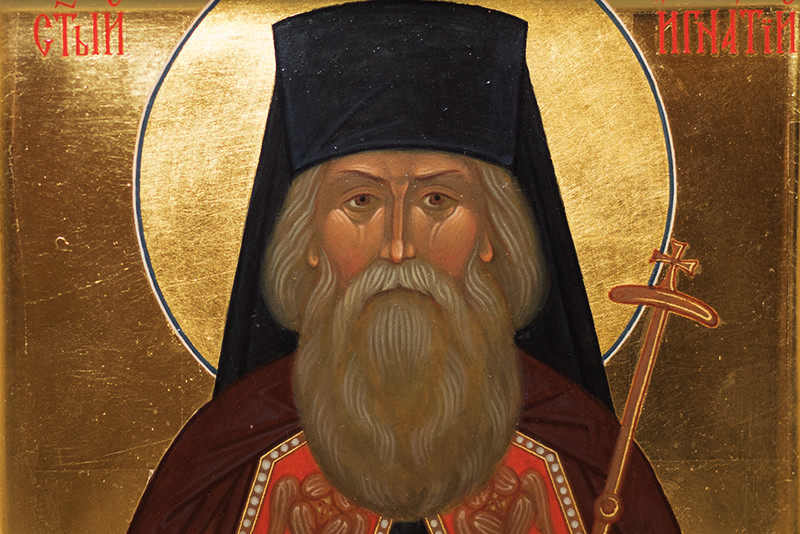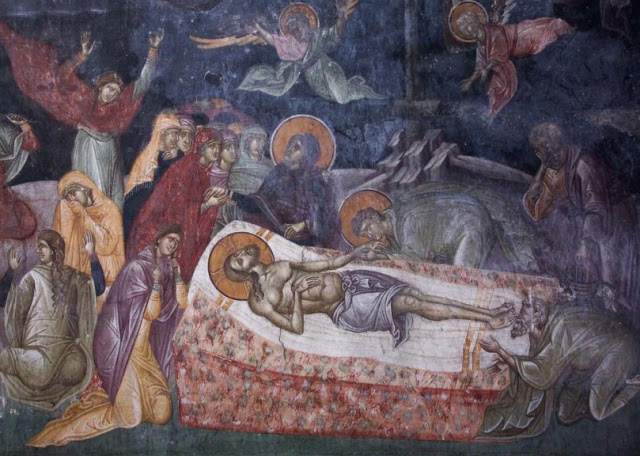 The life-affirming Biblical concept of death permeates almost the entire theological heritage of the Church, from the early Christian writings up until the present time. Priest Vladimir Bashkirov, Doctor of Theology, Professor at the Minsk Theological Academy and head of the Theology Department of the Belorussian State University Institute of Theology, provides examples of this drawing on a wide range of biblical and patristic sources.
The life-affirming Biblical concept of death permeates almost the entire theological heritage of the Church, from the early Christian writings up until the present time. Priest Vladimir Bashkirov, Doctor of Theology, Professor at the Minsk Theological Academy and head of the Theology Department of the Belorussian State University Institute of Theology, provides examples of this drawing on a wide range of biblical and patristic sources.I. The metaphysical aspect of death
In one of the collections of the sayings of the desert monks published recently under the rather humorous title “The Desert Fathers Laugh” I read a wonderful saying about death, at once both simple and deep. Here it is:
“Abba Athanasius was close to death. He said to the doctor who was assuring him that he had nothing serious: ‘What good luck! I’m dying in good health.’”
At the first glance I might seem that the elder is showing excessive bravery and is showing off his fearlessness, but in actual fact he is expressing, albeit in a rather paradoxical form, a purely Christian attitude to the phenomenon of death: “Death should not be feared, because it does not exist!”
This life-affirming Biblical concept of death permeates almost the whole of the theological heritage of the Church, from the early Christian writings up until present times.
1. Death in the Old Testament
1.1. In the Old Testament death (mawet – fading of life) is perceived in a very realistic manner. God grants his life-energy (ruach) only for a limited time (3 Kings 17:17; Job 34:14). Man’s body, created from dust, returns to the earth and his spirit returns to God, Who first granted it (Ps 145:4¨; Eccl 12:1-7). Human life is short and ends quickly (Isa 40:6; Ps 38:5-7; 89:4-6; 102:15-16; Job
14:1-2; Eccl 3:2), because “the days of our years are threescore years and ten; and if by reason of strength they be fourscore years, yet is their strength labour and sorrow; for it is soon cut off, and we fly away.”(Ps 89:10). However, in actual fact life ends up being even shorter – around 30 years for men and even less for women in connection with childbearing and high infant mortality. It was considered a happy blessing to die in old age, having become “full of days” (Gen. 25:8; Job 42:17; compare with Deut. 34:7).
14:1-2; Eccl 3:2), because “the days of our years are threescore years and ten; and if by reason of strength they be fourscore years, yet is their strength labour and sorrow; for it is soon cut off, and we fly away.”(Ps 89:10). However, in actual fact life ends up being even shorter – around 30 years for men and even less for women in connection with childbearing and high infant mortality. It was considered a happy blessing to die in old age, having become “full of days” (Gen. 25:8; Job 42:17; compare with Deut. 34:7).
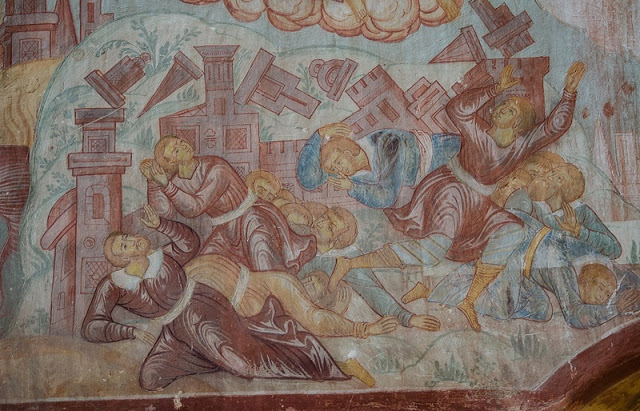
The Old Testament had not found an answer to how to treat premature death. After all, time is needed in order for life to reveal itself in full. Man himself could do very little, for example forbidding newlyweds to go to war (Deut 20:7, 2 Kings 18:33), but for the rest there only remained to sorrow and hope in God’s omnipotence, which sometimes manifested itself (3 Kings 17:17-24; 4 Kings 18-37, 4 Kings 20:9-11).
1.2. Israel did not perceive death, implacable and merciless, as an autonomous supernatural force. It is used by God to strike down (Hebrew nkh) people. Thus the Lord strikes down the cruel and wicked Nabal (1 Kings 25:3, 25:38), Uzzah, who dared to stretch his hands to the Ark of God (2 Kings 6:6-7), Sodom and Gomorrah (Gen 19:24); the firstborn of the land of Egypt (Ex 12:29); Dathan, Abiram and Korah’s people (Num 16:19-25); and He sends a pestilence on the Israelites for conducting a census (2 Kings 24:15-25), among other examples. Those attempting to get close to God risk death (Ex 19:16-25; 33:5, 20-23; Lev 16:1; Isa 6:5). In general God Yahweh kills and makes alive, wounds and heals, and no one can escape His hand (compare Deut 32:39). He casts down to Hell and lifts up (1 Kings 2:6); His might is astounding: “Thou hidest thy face, they are troubled: thou takest away their breath, they die, and return to their dust.” (Ps 103:29). Any attempt to approach Him already conceals death in itself (Ex 19:16-25; 33:5, 20-23; Lev 16:1; Isa 6:5).
Death as the means of God’s retribution manifests itself through illnesses, pain, persecution, loneliness, need, fear and being forsaken by God, and threatens life both in case of individuals and of whole societies (compare Ps 6:5-9; Ps 21:12-22; Ps 29:2-4; Ps 37; 59:3-5; 78:1-5). The Prophets could daringly declare a whole city or a whole country to be cast down into dust, although at the time of the prophecy these places were flourishing and it appeared that nothing was threatening them. This kind of prophesy was uttered by Isaiah about Zion (Isa 1:21-23) and by the prophet Amos about the house of Israel (Am 5:1-2).
1.3. In the Old Testament death is linked with the underworld, or Sheol, which is located in the bowels of the earth and is the common grave for the whole of humanity. To descend into Sheol or to be buried meant becoming a victim of the mighty power of death. And although the idea of life after death was linked to Sheol, existence in this kingdom of shadows was hopeless, because death is the result of and the punishment for sin (Gen 2, 3; Wisdom 1:13-16; 2:22-24).
However at the time of the Maccabees the attitude to death changes in connection with the struggle against foreign enslavement and, for the first time in the Old Testament, in the first book of Maccabees death is portrayed as heroic (1 Macc 13:25-30). From this time onward the idea of the anticipation of the resurrection of the dead gradually develops, an idea that had been expressed already in the book of the prophet Daniel (Dan 12, 13; compare 2 Macc 7, 9, 14). It is subsequently taken up in Jewish apocalyptic writings, in the writings of the wise men of Israel (Sir 15:6; Wisdom 2:23) and in the works of scribes close to the Pharisee faction (Acts 23:8).
2. Death in the New Testament
2.1. In the New Testament Man’s death is viewed through the prism of the death on the Cross and the Resurrection of Jesus Christ. Immortality belongs only to God (1 Tim 6:16) and it is natural for people to be afraid of death (Matt 4:16; Heb 2:15). However, because God is the life-giving source of all life (Rom 4:17), death could have only appeared as the result of Man having abandoned God, which is what happened with Adam (Rom 5:15, 17-18; 1 Cor 15:22) and which is repeated in the life of every person (Rom 6:23; Heb 9:27). In this manner, death gains power over a person not only at the end of his earthly life, but reigns over him throughout his whole life. This is so-called carnal wisdom, moral or spiritual death (Rom 8:6; 1 John 3:14), because sin, which results in death and is its sting, exists in Man despite the law of God (Rom 7:9, 1 Cor 15:56; James 1:15). For this reason the Scriptures say that the Devil, from whom sin originates, was in possession of the dominion of death (Heb 2:14) and death itself is viewed as a demonic power (1 Cor 15:26-27; Rev 6:8; 20:13-14).

2.2. The New Testament shows that Christ, who did not have to die, because He was without sin, stepped into the sphere of death, humbled Himself, having been obedient even unto death, the death of the Cross (Phil 2:7; 1 Cor 5:7; 1 Pet 3:18) and died for us (1 Thess 5:10; compare with Mark 10:45; Rom 5:6; Heb 2:9). By His Resurrection He conquered the Devil and death and holds the keys of Hell and death (Heb 2, 14-15; Rev 1:17-18). Then Christ had destroyed the power of death over those that believed in Him, i.e. those who were baptised into Christ (Rom 6:3-4) and died with Him for the world and for sin (Rom 7:6; Gal 6:14; Col 2:20). A Christian goes through death in Christ and is separated not from God, but from the world and from sin. The world and sin die within him, because the life of Jesus is opened to those who believe (2 Cor 4:10; 5:1-15; Col 3:3). In other words Christ grants life or raises from the dead. Moreover, this does not happen in the Last Days, but in the same instant, immediately. Everyone who entrusts himself to Christ crosses over from death to life (John 5:24) and will never see death (John 8:51-52), although the whole world already exists in a state of death (Rev 3:2) and is moving towards a second death, to eternal separation from God (Rev 20:14).
Christians remain mortal, they die in the physical sense, but they die in Christ (1 Thess 4:16) or fall asleep in Him (Acts 7:60; John 11:11-14; 1 Cor 7:39; 15:6, 18; 51; 1 Thess 4:13-15). Physical death is the last enemy destroyed by Christ (1 Cor 15:26), but He gave us this victory as a potential and death itself continues to afflict the bodily life of a particular individual (Rom 8:9-11). However, it has been deprived of its sting and it cannot separate a Christian from Christ; on the contrary, it brings him closer to Christ (Rom 8:38-39; 2 Cor 5:1-10; Phil 1:20-21). He, having risen from the dead, the firstborn of the dead, calls all the faithful to a new life, resurrecting and transfiguring their bodies, and then the spirit and body will exist in perfect harmony (compare with 1 Cor 15:20; Col 1:12).
We should note that when the apostle Paul speaks about the final fate of Man, he clearly distinguishes three deaths: physical death (Rom 5:12; 6:21-23; 2 Cor 1:9-10), spiritual death, i.e. death from sin (Rom 7:10; 8:6), and eternal death, when a person experiences a final separation from God (2 Cor 2:15-16).
3. Death in Pre-Nicene theology
3.1. The reality and universality of death was already taught by St. Justin the Philosopher (+ c. 165), who saw in it the action of Divine paedagogy.
In his apologetic work “Address to the Greeks” Justin’s disciple Tatian (+ c. 175) sees the cause of death exclusively in Man’s freedom. Man chose evil, the cause of death, and he is unable to renounce this evil by turning to God.
In his treatise ‘On the Resurrection of the Body’ Athenagoras (2nd century) emphasises the analogy between sleep and death and repeats after Homer “Sleep and Death are twin brothers.”
He argues thus: “In death, as in sleep, the vital activity of soul and body is interrupted. With waking and resurrection this anomaly is destroyed, consciousness returns, and the unity of soul and body is restored.”
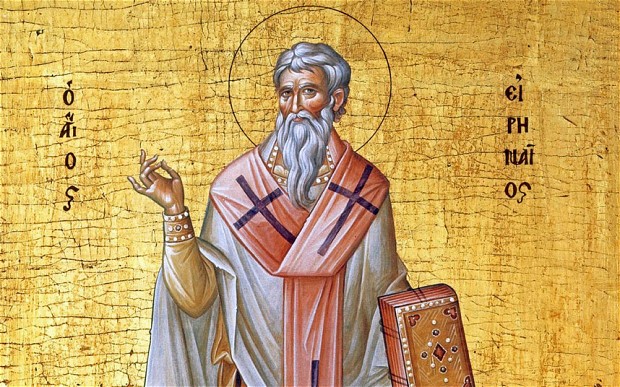
3.2. St. Irenaeus of Lyons (+ c. 202) was the first of the pre-Nicene Fathers to see in death a creative element looking towards eternity: “He (God) restricted sin, appointing death and putting a stop to sin, establishing a limit to it through the destruction of the flesh, which must remain in the earth, so that at one point Man would stop living for sin and, dying to it, start to live for God.”
Subsequently this thought becomes part of the general patristic tradition: this was the opinion held by Clement of Alexandria (+ c. 215) and this was also thought by Tertullian (+ c. 225), who believed the sin of Adam and Eve to be the cause of mortality in mankind.
St. Hippolytus of Rome (+ c. 236) stated that human bodies were completely indestructible and only decomposed into their component parts, rather then being destroyed.
3.3. The same idea was shared by Origen (+254) another famous Church writer of the 3rd century.
Like other ancient Christian writers he believed sin to be the cause of mortality in the human race and understood the ‘coats of skins’ (Gen 3:21) to mean the present mortal human body: “Coats of skins constitute the mortality into which Adam and Eve were clothed after they were condemned to death for sin.”
St. Methodius of Olympus (+ c. 311) sees within death the action of Divine paedagogy. For Man death is preferable to separation from the Tree of Life, and to the cementing of this horrendous condition for eternity.
4. St. Basil the Great and St. Gregory the Theologian on death
4.1. Like earlier theologians, St. Basil the Great (+ 379) thought that the cause of death is rooted in human will, which preferred matter to spirit and illusion to reality. “Adam… was protected in all these things by God and enjoyed the blessings belonging to Him, he quickly became full of everything. And as it were becoming insolent through satiety, he preferred what appeared delightful to the fleshly eyes to the spiritual beauty and considered the filling of the stomach more valuable than the spiritual enjoyments. And immediately he was outside paradise and outside that blessed way of life, becoming evil not from necessity but from thoughtlessness. Because of this he also sinned through wicked free choice and died through the sin. “For the wages of sin is death” [Rom 6:23]. For to the extent that he withdrew from life, he likewise drew near to death. For God is life, and the privation of life is death.”
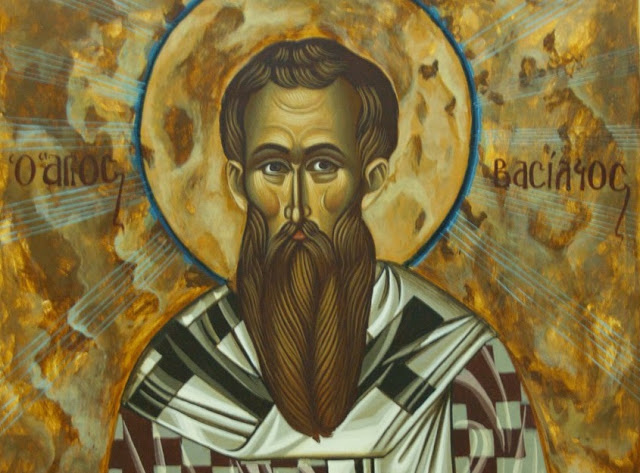
In this manner the first cause of death is lack of knowledge of God: “For the body,” he states, “cannot live without breath and the soul cannot exist without the Creator, because lack of knowledge of God is death for the soul.”
Death has entered so deeply into Man’s nature that his whole life is gradual dying, because with his body he lives in a mortal world, according to the laws of the material world.
4.2. For St. Gregory the Theologian (+ c. 389) death is the action of God’s judgement. It puts a stop to sin, so that “evil did not become immortal. Thus the punishment itself becomes a sign of love towards humanity, because I am sure that this is the manner of God’s punishment.”
St. Gregory believes that on his deathbed every person “is an honest judge of himself on account of the judgement that awaits him beyond.” And thus it could be said that life and death penetrate each other and are different forms of the same existence.
5. St Gregory of Nyssa on death
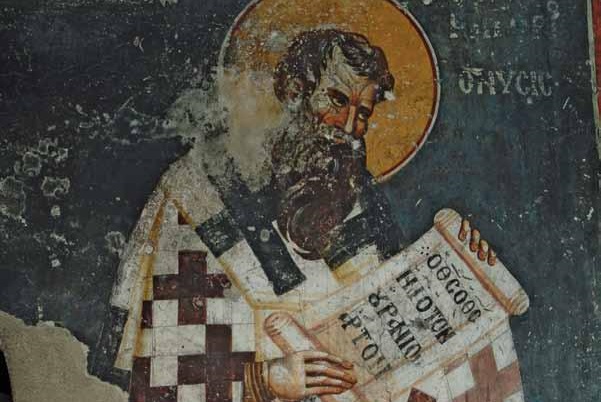
The theme of death was also of special interest to St. Gregory of Nyssa (+ 395). He returned to it many times in his works, and developed, on the basis of the thought of his distinguished predecessors and contemporaries, the Christian teaching on death and its place in the life of each human being, as well as for the human race as a whole. Moreover, he did it with his characteristic talent, unsurpassable intensity and depth. Virtually all the scholars of his legacy make note of these qualities, which is why we should look at his concept of death in greater detail.
Death of the body
5.1. Like all the other Fathers and Teachers of the Church, St. Gregory of Nyssa views human life itself as the result of very close interaction between two substances from which he has been created: soul and body. “The human being,” he states in the Great Catechism, “is a twofold creature, compounded of soul and body.”
The human soul is that vivifying source that communicates life to the body with which it is in contact. It “penetrates equally every member that composes the body and transmits life to all and each of such parts.”
Consequently death is the parting of body and soul, that is, in the opinion of St. Gregory, in death a person’s bodily nature is deprived of life, the inner link between soul and body is severed and sensory organs become extinguished and various elements that made up the body decompose into groups of like elements. This happens because the body is complex in its composition, i.e. comprised of different elements, pieces of matter, each of which returns to its place.
He has another extremely important definition of death. It appears to him as the assembly of qualities and functions that appeared in the human organism after the Fall of our ancestors.
5.2. St. Gregory decisively defends the idea of the indestructibility of the human body. Such a view fully corresponds to his teaching on the nature of matter:
“… Not one of those things which we attribute to body is itself body; neither figure, nor colour, nor weight, nor extension, nor quantity, nor any other qualifying notion whatever; but every one of them is a category; it is the combination of them all into a single whole that constitutes body.”
“This dynamic theory of matter,” notes V.N. Lossky (1958), “makes it possible to conceive of different degrees of materiality, bodies which are material to a greater or lesser extent; it also makes it easier to comprehend the change which took place in the original nature after the coming of sin, as also the resurrection of the body. The material elements pass from one body to another, so that the universe is in fact but a single body.”
Moreover, St. Gregory states that the elements of the human body are completely preserved in their original state; that they never stop existing.
“The body does not disappear completely, but decomposes into components of which it is formed; these elements exist in water and air, in earth and fire. Because the changed elements do not cease to exist, and what was borrowed from them returns to them after decomposition, within these elements the parts of the body are wholly preserved.” But there is more!
It turns out that the components of our body, becoming joined with these original elements, in no way become dissolved in them, losing their individuality, but retain in themselves particular features that distinguish them from the components of other bodies.
6. The death of the immortal soul and its condition beyond the grave
6.1. Sin as a source of death had an effect on the soul as well as the body, and thus death encompassed the whole of the human being, i.e. both body and soul. It would be better to say that the soul was the first to die, because disobedience is a sin of the will and not the body, while the will, from which evil spread to the whole of nature, belongs to the soul.
This is why together with the Apostle Paul St. Gregory speaks of two deaths:
“Since… the communication of sinful passions can occur in soul and body … there is a certain resemblance between the death of the body and the death of the soul, because as the departure of the sensory life is called the death of the body, the departure from true life is also called the death of the soul.”
6.2. But what happens with the soul, which is an immortal entity, after death and the decay of the body? St. Gregory is completely confident in maintaining that the soul simply leaves the body and passes to a different world.
The commentary on the Song of Songs contains a thought that “death gained power over half of our nature, because only the soul remains immortal”, which, like the angels, extends into eternity.
“Does not the flesh decompose into the earth and the mind remain with the soul, retaining existence even after the loss of the flesh? This is proved by the fact that the
rich man remembers those still on earth and begs Abraham for those connected with him by ties of kinship… Having experienced for himself the inevitability of the judgement he concerns himself with those close to him.”
rich man remembers those still on earth and begs Abraham for those connected with him by ties of kinship… Having experienced for himself the inevitability of the judgement he concerns himself with those close to him.”
St. Gregory tries to penetrate the mystery of the soul’s existence beyond the grave, and comes to the very deeply thought-through conclusion that after a person’s death the soul remains close to the constituent parts of the body that have decomposed into their initial elements; this happens not according to its nature, but its special “cognitive power”. He compares it to a guard, watching over his property.
To support his opinion he puts forward two vivid figurative examples of the work of an artist and a potter.
The holy Father concludes his reflections on the metaphysical interrelation of the body and soul with a very interesting remark, on which, however, he does not comment further:
“Whoever … sees that the words of Scripture contain the meaning that after the decomposition of its corporeal form the soul possesses earth, eyes, tongue and so on, would not be transgressing against probability.”
7. Death as punishment with a good aim
7.1. Man was created perfect, or, according to St. John of Damascus (+749), “undergoing deification”, i.e. drawn towards God, and this means, notes St. Gregory of Nyssa, he is capable of enjoying the divine blessings, eternity and immortality.
He sees the cause of the dismal condition of Adam and his descendants in the incorrect use of freedom, which chooses sin and evil.
Following Philo of Alexandria (+ c. 50 AD) he allegorically interprets the “coats of skins” (Gen 3:21) as the mortality of the body, our crude biological condition.
Death becomes universal, because children are born to their mortal parents: “The fruit of a mortal birth is also necessarily mortal”.
7.2. However, the saint does not see death only as God’s punishment, but sees in it the action of Divine paedagogy, which has a good and salvatory purpose; it is simply a means and contains a process, because it puts a limit to the development of evil in human nature.
There are three sides to this process and it includes a self-purification, a removal from the future psychophysical composition of Man:
a) corrupt passions of our body;
b) needs of our body, which are necessary for us in the current life, but completely unnecessary in the life to come,
c) parts of our nature intended only for serving the needs of our bodies.
In the end a true transfiguration of Man takes place, with the restoration of the original state of human morality.
It is interesting to note that in the ascetic tradition the transformation of the senses is one of the aims of the practical labour of the ascetic already here on earth.
In this manner St. Gregory supposes that the body would have a different composition in the life to come, which would not include the organs important for earthly life. Naturally he did not say anything about the appearance of such a transfigured body, because he did not like to speculate.

